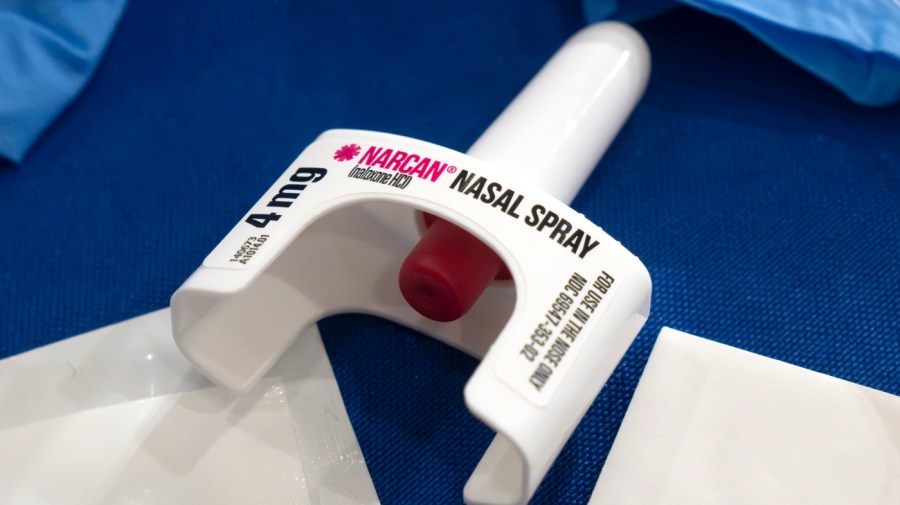
A new shockwave is currently reverberating around law enforcement and public health communities.
In the last 12 months, U.S. drug overdose deaths have declined an estimated 14 percent or more, according to preliminary statistics from the Centers for Disease Control. That represents more than 16,000 lives saved and the largest decrease on record.
This sudden decline has taken many by surprise. For years, the rate of overdose deaths continued to climb, largely due to the emergence of synthetic opioids like fentanyl.
So, naturally, the question on everyone’s mind is “What changed?”
Establishing causality in social science is difficult, even with the benefit of time, but researchers have identified several possible theories.
On the demand side, some point to increased access to harm reduction services including fentanyl test strips and naloxone, an overdose-reversing agent recently made available over the counter and widely distributed to at-risk populations across the country.
Others have suggested greater awareness of the dangers of fentanyl and its prevalence in counterfeit pills through prevention and education campaigns are finally having an impact on substance use. There is also the grim, but very real possibility, that after so many overdose deaths, there is a smaller pool of potential victims.
At the same time, there have been some significant developments on the supply side. Paradoxically, the introduction of the powerful animal tranquilizer xylazine into the drug supply may be contributing to decreasing overdose deaths. Xylazine is often mixed with fentanyl to extend the user’s “high.” But it also has the effect of rendering users unconscious for long periods of time, which decreases the number of times they use deadly drugs like fentanyl.
The supply of fentanyl also seems less potent. According to the U.S. Drug Enforcement Administration, 50 percent of counterfeit pills today contain a potentially lethal dose of fentanyl, down from 70 percent a year ago. While the DEA has attributed this to aggressive enforcement action and increased seizures, the reality is likely more complex — and concerning.
After years of frosty relations, China and the U.S. have resumed counterdrug cooperation, most notably in Beijing’s stepped-up control of precursor chemicals bound for Mexico. In August, China scheduled multiple precursor chemicals commonly used in the manufacture of fentanyl and enhanced oversight of the chemical industry.
In 2019, a similar scheduling action in China led to a precipitous drop in finished fentanyl being shipped directly to the U.S. It appears their ban on precursor chemicals may be having a similar effect, but it is far too soon to declare victory.
Last year, more than 96,000 Americans died from overdose deaths. Illicit drugs have killed more than 1 million Americans since the turn of the century, and they remain the leading cause of death for Americans between ages 18 and 45.
And the current decline may only be a temporary reprieve. Transnational criminal organizations are extremely resilient. Like any successful business, they are constantly searching for ways to improve operations, diversify products, and expand market share.
We know, for example, that Mexican cartels are actively working to shore up their supply of precursor chemicals by establishing new trafficking networks in India and other countries around the world. They are also working with local chemists to manufacture precursor chemicals in Mexico, thereby eliminating the need to import chemicals from halfway around the world. This would save them considerable time and money — a scary proposition, considering that synthetic drugs like fentanyl and methamphetamine are already very cheap and easy to make.
The U.S. must now prepare for a time when the Mexican cartels control every stage of the drug trade and its impact on drug control efforts. In recent years, the U.S. has found success targeting chemical suppliers in Asia and interdicting their shipments in transit. But with a condensed supply chain and fewer choke points to exploit, the U.S. will need to adjust its strategy yet again by prioritizing security cooperation with Mexico.
The security and prosperity of the U.S. and Mexico are inextricably linked. In this new era of synthetic drugs, it will take both countries working together to degrade the Mexican cartels and stem the flow of illicit drugs into the U.S.
Moving forward, the U.S. and Mexico must engage substantively to build law enforcement capacity, conduct joint operations, and disrupt cross-border smuggling. Only then can we ensure the public health and safety of citizens on both sides of the border.
Jim Crotty is the former deputy chief of staff at the U.S. Drug Enforcement Administration. He currently serves as an adjunct professor at American University’s School of Public Affairs, sits on the Advisory Board for United Against Fentanyl, and is a member of the Global Institute of Transnational Organized Crime Network of Experts.

